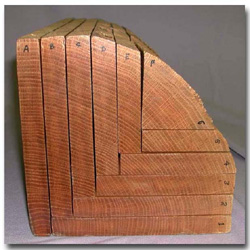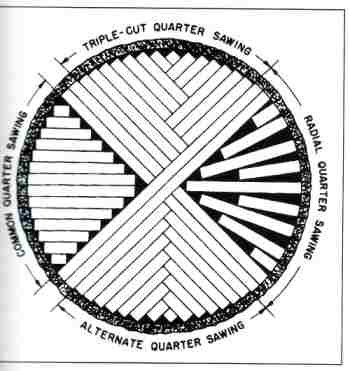Having done a (very) little sawyering with a portable band mill, I posed a question to Jeff Mills and scsmith on the LARGE Sycamore Tree thread regarding how they mill QS from a log. Being the patient sort of fellow that I am, I started to surf around looking for more information and found conflicting info - so I need ya'lls help.
One site showed this graphic:

which seems to indicate that rift sawn lumber is nearly 90 degrees growth ring to face orientation. But another site gave the following guidance:
Quarter sawn = growth ring to face orientation 75 to 90 degrees
Rift sawn = growth ring to face orientation 45 to 75 degrees
Which is in direct conflict with the above graphic. So which is it? :icon_scra I always thought that the best of the best QS material had the growth rings at 90 degrees to the face.
I guess at the end of the day, it's mostly semantics, since the appearance of the final project is what really counts.
Confused,
C.
One site showed this graphic:

which seems to indicate that rift sawn lumber is nearly 90 degrees growth ring to face orientation. But another site gave the following guidance:
Quarter sawn = growth ring to face orientation 75 to 90 degrees
Rift sawn = growth ring to face orientation 45 to 75 degrees
Which is in direct conflict with the above graphic. So which is it? :icon_scra I always thought that the best of the best QS material had the growth rings at 90 degrees to the face.
I guess at the end of the day, it's mostly semantics, since the appearance of the final project is what really counts.
Confused,
C.


